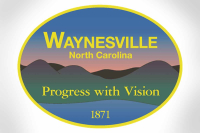Isolated and remote, Macon spends a pretty penny to keep Nantahala School afloat
The far-flung Nantahala School in the remote reaches of Macon County is putting a financial drain on local coffers, prompting county leaders to ask the state for extra money to cover the cost of operating such an isolated school.
Nantahala School goes from kindergarten to 12th grade but has only about 100 students. The small student population makes for small class sizes — some grades with as few as five students.
The cost of running Nantahala School comes out to $9,600 per student, with at at least one teacher per grade, plus a principal.
“It’s a great school,” said Macon County School District Superintendant Jim Duncan. “But, certainly no other school costs that much to operate.”
By comparison, Franklin High School comes out to about $4,700 per student. In Highlands School — which is also a K-12 school in Macon County — it costs just more than $6,000 per student to run.
Related Items
Nantahala School is one of the last of its kind. Nestled in the Nantahala National Forest, it is one of only three remaining K-12 schools in the state — a modern rendering of the extinct, one-room school house. It also touts of graduation rate of 100 percent during the past few years, which may be expected of a school where a typical class size is six or seven students.
That makes Nantahala very expensive to operate. It simply doesn’t have the critical mass of students to secure adequate state funding.
The state uses a rigid school funding formula — one that assumes much larger class sizes than Nantahala has. The state kicks in enough money to hire one teacher for every 18 to 31 students, depending on the grade.
When it comes to Nantahala, with far fewer students per class, the district doesn’t get enough state funding to cover each teacher’s salary, leaving the county to subsidize the remaining portion.
County leaders are working with Sen. Jim Davis, R-Macon, to introduce a state bill that would make an exception for Nantahala School in the state funding formula.
Duncan said if Nantahala were to be solely state funded, it would have seven teachers for all 12 grades, not the 13 it currently has, and only one or two high school teachers — a scenario, he said, is not realistic, academically speaking. Pupils in Nantahala are required to pass the same statewide exams other students take.
“You wouldn’t have very much,” Duncan said. “Maybe some English and social studies and combined math and science, anything else would go by the wayside.”
The county contributes between $260,000 and $275,000 a year to round out the $1 million or so budget for Nantahala School. Macon County lawmakers have consolidated some schools in recent years, combining smaller rural schools into single larger ones for efficiency purposes.
However, shipping students from Nantahala, at the far northern corner of the county, to another school in the county isn’t practical, requiring a hour-drive one way.
“We’ve got isolation issues,” Duncan said, “You just can’t pick up kids that early and transfer them down the Wayah Bald Mountain and then back up there.”
The drain of Nantahala School is exacerbating the budget crisis Macon is seeing throughout the entire school district.
Macon Schools will need $2.2 million from the county in the coming fiscal year to avoid cuts. Duncan said additional state funds for Nantahala School could help chip away at that figure.
Davis’ bill will provide adequate state funding for one teacher per grade for Nantahala School due to its remote location, exempting the school from the formula used elsewhere across the state. Its chances are unknown in this time of lean fiscal conservatism in Raleigh. The bill will have to successfully wiggle its way through two or more committees and a series of votes of approval by lawmakers.
Two years ago, a similar bill was introduced that never made it to the floor, but Davis is optimistic.
“The budget is tight,” Davis. “But you’ll never get it unless you ask.”
One point of friction for Davis and Duncan is that there is already a law on the books that creates an exception for Ocracoke School because of its remote island location on the Outer Banks. Ocracoke is the other K-12 in North Carolina — aside from the Nantahala and Highlands schools in Macon. Davis said that bill was pushed through by former state Sen. Mark Basnight, a powerhouse in state politics who hailed from the coast.
“All we’re saying is that if the state is giving one teacher per grade level to Ocracoke, why wouldn’t the same formula apply to schools in the western part of the state,” Duncan said.









